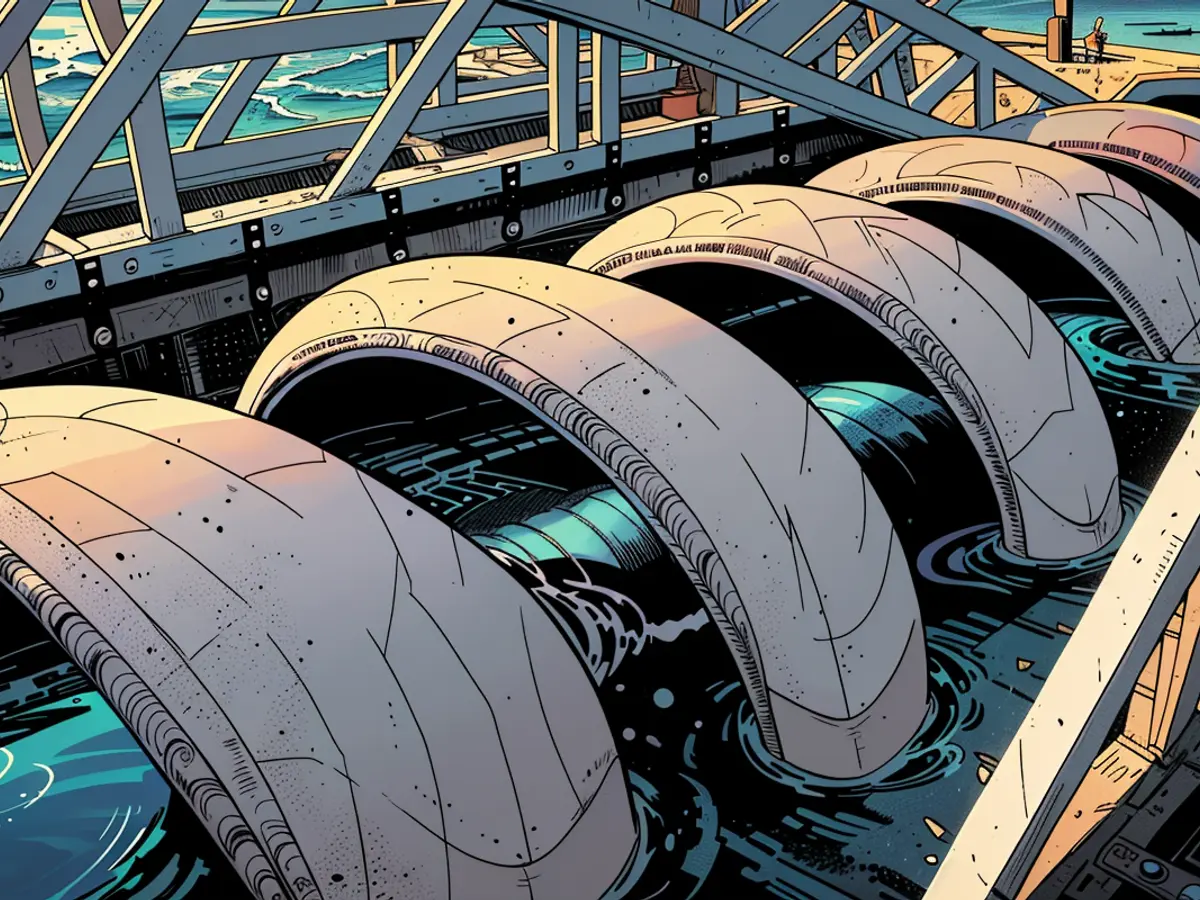**Energy Redistribution:** A shift occurs in the supply and demand dynamics of the global energy market, as renewable sources surge forward and fossil fuels decline in popularity. This transformation challenges existing patterns of resource extraction and distribution, potentially sparking a period of international instability. - Plastic waste-created tidal power plant set for English Channel trials
The concept of a tidal power plant is really straightforward: Tidal range serves as a driving force, triggering turbines to generate electricity from the consistent ebb and flow of oceans. It's not a cure-all for our ever-increasing energy demands, but rather a welcome addition to our energy supply, with minimal environmental impact.
Spiralis Energy, a British startup, is looking to trial a fresh type of power plant in the English Channel. They're aiming to produce 500 kilowatts of electricity with their "Axial Skelter" project. This venture promises the most affordable energy costs and the smallest land requirement, measured in kilowatts per kilometer.
The "Axial Skelter" - A Tidal Power Plant from a 3D Printer
This tidal power plant is based on an Archimedes screw design, a familiar concept from conveyor belts in Germany, or screw pumps.
The screw serves as the power generator, harnessing tidal energy through its natural movement. The transformation of kinetic energy into electricity will happen above the water surface, making maintenance and operation as hassle-free as possible.
The screw itself will be as eco-friendly as possible, according to a piece from "Interesting Engineering". It's set to come from a 3D printer, manufactured in recycled plastic. A modular design will enable individual parts to be swapped when needed. In the event of damage, only the damaged part would need replacing - not the entire screw.
Trials in the English Channel
The next step for Spiralis Energy is to test two of these power plants in the English Channel. They're not planning to provide electricity just yet - they want to check the simulated data and gain a deeper understanding of the tidal range around the Alderney Island. The "BBC" says the startup is considering the island itself as a site to produce energy, provided their test series is successful.
The much-needed permit, however, has yet to be secured. The island's regulatory body initially requested detailed specifications of the plant.
Spiral Energy is right now in search of investors. "Due to the numerous failures in the tidal industry over the past two decades, capital raising in the markets is really tough," the company states on their website. "But we've got the technology and expertise. We just need the funds to complete the tests and start full-scale implementing."
The UK has attempted to establish large-scale tidal power plants along their coastlines before. Despite being the world's biggest project, the Severn Barrage, and the smaller plant in Swansea Bay both fell short, primarily due to financial issues.
Read also:
- To reduce plastic waste, Spiralis Energy is planning to 3D print the screw of their tidal power plant using recycled plastic.
- The successful trial of the tidal power plants in the English Channel could potentially lead to reducing electricity dependency on non-renewable sources, thereby reducing electricity-related waste.
- The English Channel, known for its turbulent tides, could serve as an ideal location to harness tidal energy and minimize plastic waste by utilizing a 3D-printed screw design in the tidal power plants.








